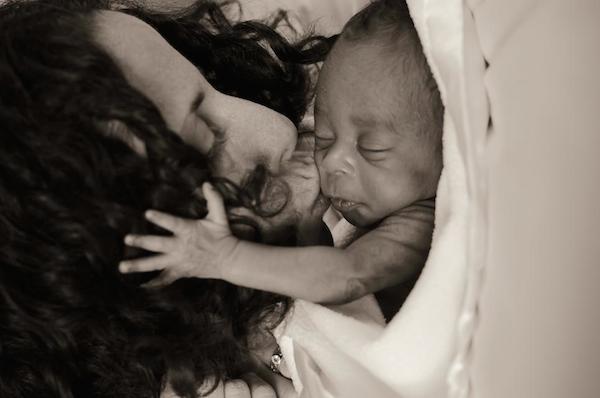The “Derby Bunch”, or “Six Pack” as my parents like to call them, are a motley crew of grandkids – three of each gender – born within a six-year span to my two siblings and myself. We are spread geographically along the Eastern seaboard, from New York down to Atlanta. And though all Jewish, we are spread across the ethnic and denominational map as well.
This was most clearly brought home to me in the “Year of the Bar Mitzvahs.” My siblings and I each have a son born within a one-year period. Thus, three Bar Mitzvahs along the Eastern seaboard within a 12-month period.
Jake’s, in Potomac, Maryland, was first. Jake is the biological progeny of my brother and his wife, both born Jewish. He went to a Jewish preschool and has attended public schools and secular summer camps. Although they had belonged to different Conservative congregations, at the time of Jake’s Bar Mitzvah his family was occasionally attending a Havurah-type Shabbat service. Brown-haired, brown-eyed and light-skinned Jake read from the Torah at his Saturday evening Havdalah service. Couples received aliyot (were called up to the Torah) together – my parents and Jake’s other grandparents, etc. It was followed by a cocktail hour and sit-down dinner at which steak and shrimp were served. Kosher meals were provided for my immediate family. In addition to a DJ spinning dance music, Jake’s rock band performed with him as lead vocalist, and his party had a rock and roll theme. Jake’s friends reflected the diverse DC-area upper-middle-class public school population.
Next was my son Matan’s Bar Mitzvah in Atlanta, Georgia. Our family is Sabbath observant and we are part of a strong community, based at a Chabad shul with Modern Orthodox overtones. Our adopted children were converted to Judaism when a few weeks old, and have attended Jewish preschools, private Jewish day schools and summer camps their entire lives. Matan’s Bar Mitzvah weekend began with him leading Friday night services, through a large Friday night dinner in our synagogue’s social hall. He gave a d’var Torah (speech about the Torah portion) at dinner, and the next day read from the Torah during the Shabbat day services. There was a large community Kiddush, and several low-key celebrations and meals over the course of the weekend, ending with a skating party for his friends. My dark-skinned Mexican / Aztec / British son’s friends are all Jewish, but vary in appearance from blond and blue-eyed to Semitic-looking Yemenite and Persian boys.
The last Bar Mitzvah of the year belonged to my nephew Adam in Larchmont, New York. Adam’s father is Chinese American and not Jewish. (He and my sister are divorced.) Adam has attended public schools and secular private schools. Part Asian Adam’s Bar Mitzvah took place in a Reform temple on a Saturday morning and was followed by a light Kiddush lunch for family. He also read from the Torah and gave a speech. We celebrated at a luncheon party at a country club on Sunday, where we danced and sang with a backup band. Adam’s friends were a bit diverse, reflecting his school population. Although the food at the party was not kosher, kosher food was provided for those of us who keep the dietary laws.
I am reminded of a book we had when my kids were small; “We are all Alike, We are all Different.” I have been asked in reference to my (adopted) kids, “Were they adopted or are you the nanny?” My sister has been asked of her (biological) kids, “From where in China did you get them?” For various reasons none of the six grandkids physically resemble their parents or their cousins. They are all different physically, yet they are all beloved members of our family. All six grandkids are Jewish and have by now all celebrated their b’nai mitzvot, but each was observed and celebrated in a slightly different way.
Is the Derby Bunch unique or typical of the American Jewish family in the 21st century? I believe we are becoming more and more common, as families spread across denominations from Reconstructionist to ultra-Orthodox, and as the faces of Jewish children diversify through conversion, adoption and intermarriage. What hasn’t changed is the strength of family bonds, the importance of connection and continuity. One of our rabbi’s favorite expressions is “A Jew is a Jew is a Jew”. Regardless of our levels or methods of religious observance, amount of Torah education, or physical appearance, we are all one Jewish family, united through our Jewish souls – neshamot – and common ancestry. Our Model UN family may not resemble the iconic light-skinned Ashkenazic American Jewish family of the past, but we do reflect the beautiful diversity of our extended Jewish family around the world.







